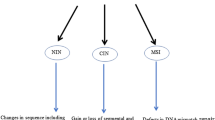Summary.
In previous papers a strongly simplified physical-mathematical (biokinetic) model has been presented, which dealt with the factors influencing the timely development of DNA mismatches dependent cells (malignant cells) in their kinetic competition to the development of normal somatic cells (i.e. cells with correct genetic information). The kinetic results have been studied by comparing them with experimental results reported in the literature upon inhibiting the organism’s own enzymatic DNA-proofreading and repair machinery. In spite of the fact that the model uses fully the chances of kinetics, which allows to describe even rather complicated systems with many regulation circuits and feed back loops in a rather simple, summarizing way, it has been demonstrated that the model does not only well describe the experimentally found significant increases of mutants in cases when the DNA repair system has been inhibited, but it can also reflect cancer-development and the efficacy of classical cancer therapies like surgery or chemotherapy as well.
In applying the predictions of the model as to the opposite of an inhibition of the DNA repair system, i.e., in testing the results, if the organism’s own repair systems were stimulated, the model shows that there could be a chance for a new, adjuvant cancer-therapy if this concept was combined with biochemical facts and clinical findings which are reported in the literature.
In continuation of this concept, the predictions of the model have been compared with findings upon cancer-therapies by apoptosis-triggerers like tamoxifen. Further, according to the fact that there exists literature by which it is demonstrated by clinical facts that it is not necessary to use living cells (e.g. from umbilical cord’s blood or bone-marrow) to achieve surprising therapeutic successes in cancer therapy, but also cell-free “human-placenta-extracts” (HPEs) can be similarily effective, it has been tried in a first preliminary analytical effort to characterize “effector-substances” contained therein.
Similar content being viewed by others
Author information
Authors and Affiliations
Corresponding author
Additional information
Received January 27, 2003; accepted (revised) March 25, 2003 Published online August 18, 2003
Rights and permissions
About this article
Cite this article
Haschke, H. A Biokinetic Model to Describe Consequences of Inhibition/Stimulation in DNA-Proofreading and -Repair, Part 4. Monatshefte für Chemie 134, 1289–1309 (2003). https://doi.org/10.1007/s00706-003-0050-0
Issue Date:
DOI: https://doi.org/10.1007/s00706-003-0050-0




